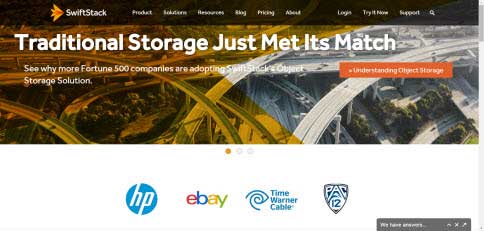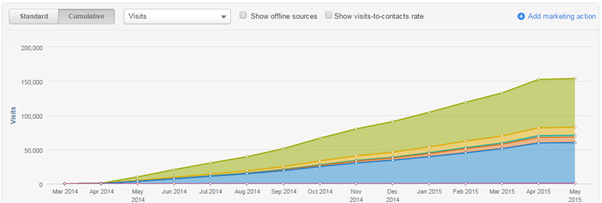What’s included in Full Service Professional SEO Program
We’ve designed the Full Service Professional SEO program to help you receive high quality search traffic and conversions (leads). Below is our Professional SEO program process:
Step 1. Discover Your Target Audience and Business Goals
We conduct first person interviews with your internal team and customers to understand your target audience, business goals, website goals for lead generation and revenue, and value proposition.
Step 2. Opportunity and Gap Analysis
Your prospects use many different search queries to search for your product or service. Based on your target audience, we determine the opportunity across each target segment. Opportunities are the topics which have significant search volume based on your offerings but there is no related content on your site to attract that segment. The greater the opportunities, the greater the ROI on your organic or paid search investment. Gaps are the topics for which search volume is strong but you have a relatively low share of visits to your site.
Step 3. SEO Audit of Website Code and Content
There is a very high likelihood your website has technical and on-page SEO issues which prevent it from receiving optimal traffic for existing content. We review your website for these issues and provide recommendations on how to fix them. Some of the elements covered in the SEO audit include website architecture, indexing and crawling issues, media optimization (images and videos), page load speed, URL formatting, semantic tags (title tags, meta description, headings), geo-targeting, visitor engagement, conversion gaps, UGC implications and more.
Step 4. Competitor Analysis
A critical Step in the foundation of any SEO campaign is the analysis of who your top competitors are, what they’re ranking for, and how they achieved those rankings. Based on this analysis, we use this to fuel your SEO strategy to keep pace (or catch up!) and remain competitive.
Step 5. Content Strategy
Your target audience tells you exactly what their needs are when they search. Providing compelling information based on your target audience needs will help you to attract them, and convert them to leads or buy your products and services.
It’s important to understand what motivates your target audience to look for your product or service. For example, if you are a business intelligence software seller, you might get a lot of visitors for the keyword “how to implement bi for healthcare” but no conversions. Yet another keyword such as, “how to get information from business data in healthcare industry” may not get as much traffic, but a higher percentage of that traffic leads to conversions. Knowing that informs content strategy and more content will be built around that topic since we know it is a highly converting keyword phrase.
Based on opportunity analysis and competitor analysis, we will devise a content strategy to attract and convert your target audience. The content strategy will encompass elements related to website architecture, new website features, tools, on-site content topics (category, sub-category, and blogs), off-site content topics, and outreach campaigns.
Step 6. SEO Analytics Setup
Every website is unique and must have well-defined goals. For example, a website which sells ad-space may have “page views” as the primary goal. A website which sells software may have “number of visitors who submit lead information” as primary goal and “download of whitepaper and case studies” as secondary goal. An e-commerce website may have “sales” as its primary goal and “number of reviews” as its secondary goal. We set up your reporting to measure your website’s primary and secondary goals. This help us to understand the improvement in acquisition, engagement, and conversion once we optimize your website. The data from the analytics guides future SEO campaigns.
Step 7. On-Site Optimization
We optimize each page of your website using a keyword map. A keyword map contains the five most critical elements of on-page search optimization.
- Meta title
- Meta description
- Headings
- Content optimization for primary and secondary keywords
- Image optimization for primary and secondary keywords
Step 8. Technical SEO Implementation
The SEO audit completed earlier lays down the foundation for what needs to be fixed on your website and the priorities. We work with our technical, content, and design experts to make the required fixes to your website. This will also involve the architectural changes which are identified in the content strategy phase.
Step 9. Create Fresh Content
Your audience has specific needs at each level of buying cycle. We will create fresh content based on the topics identified during content strategy research phase. We map the content each buyer wants at each stage of the buying process. For example, if you are a digital camera seller, one of your buyer personas maybe parents with children who are planning for a summer vacation. Their buying process may look like this:
- Awareness: The prospect realizes they have a need for a camera.
- Consideration: The prospect starts an online search. They search for terms such as Best DSLR camera, best point and shoot camera, high resolution cameras, best DSLR camera for vacation, good underwater camera, etc.
- Evaluate alternatives: The prospect’s reviews the short list of alternatives, reviewing brands, specifications, pricing, user reviews, etc. trying to get the most for the least price and reducing risk. The more complex the product or service offering, the more questions must be answered in this phase.
- Purchase : The prospect purchases the digital camera, using a discount from the site.
- Post purchase: Your new customer is thrilled with the camera and customer service and comes back to learn how to take high quality pictures from his camera and learn about add-ons, such as tri-pods, carrying cases, etc.
Based on your buyer personas and products and services you are selling, we create content (or work with your content writers) to engage the audience at each stage of the buying process. We also create content for guest posts across relevant websites that complement your product or service.
Step 10. Outreach Industry Influencers
Every industry has influencers – thought leaders, industry associations, etc. – who have a large number of people who follow them on social media and visit their websites. We help you build relationship with your industry influencers by crafting stories through PR and content campaigns to obtain coverage across the influencer’s website. We measure the outreach campaigns with the number of placements earned, social followers, and community engagement.
Step 11. Manage Social Media and PR
Just sharing (often boring) content on social media does not work. Your messages must be tailored in interesting and exciting ways to engage your audience across social networks. We help you increase engagement with your audience across social networks through techniques such as:
- Building excitement through text, compelling images, and 10 second video vines to communicate across Twitter, Facebook, Instagram, and Pinterest.
- Rewriting your PR by removing the jargons and making it more social network friendly.
- Newsjacking to reach new audiences. We would create our own angle for a breaking news story in your industry and promote it through social media with established hashtags.
These are just some of the tactics we use for social media and PR activities.
Ongoing: Monitor Search Engine Rankings
We breakdown the search traffic into query categories targeted by your website and monitor the rankings across each of those query categories. The query categories combined with visitor behavior provide valuable insights about the performance of query categories. For example, some query categories might provide better engagement and conversion as compared to other categories. Certain query categories might result in less traffic from SERPs or lower engagement on your website. By gaining insights across query categories, we will prioritize the categories which need to be further optimized for acquisition and conversion.
Ongoing: Monitor Competitor Rankings
You need to an eye on the competitive landscape. Your competitors might use various strategies to rank for new keywords by optimizing different categories on their website. We monitor your competitor’s rankings to uncover new business opportunities and tap into such opportunities early on.
Ongoing: Analyze SEO Efforts and Deliver Reports
We monitor the SEO impact across three dimensions that include acquisition, engagement, and conversion. Acquisition provides insights into the organic traffic across different categories for your website. Engagement helps us to understand the content performance on your website. A high bounce rate tells us that content on your website might not be highly engaging or you are targeting the wrong queries. We analyze the conversion rates across each category of your website. This helps us to determine the strongest categories which provide maximum ROI and weakest categories which need further development.









